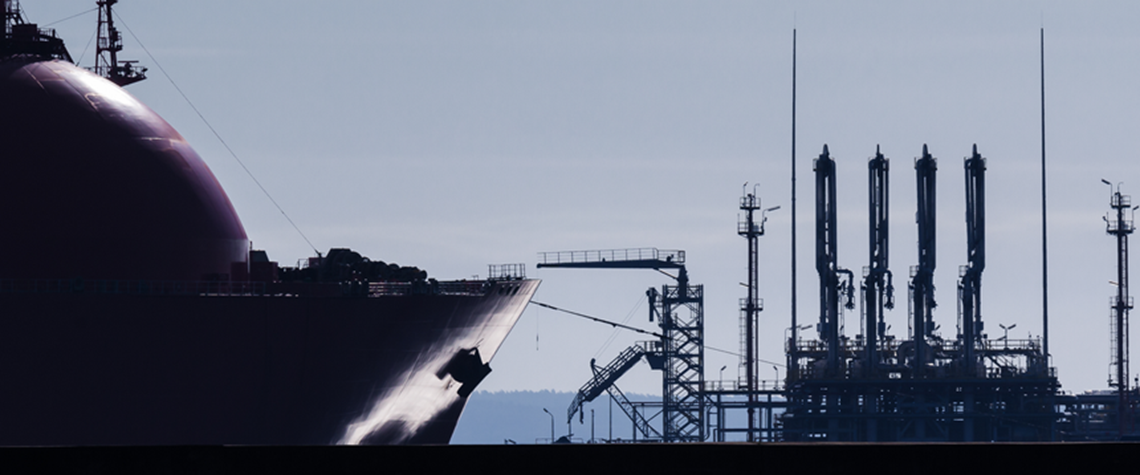Sourcing sufficient LNG for Europe will be “very challenging over the coming years”, warns Anatol Feygin, CCO at US LNG exporter Cheniere. “The big push of Australian and US LNG supply expansion is now behind us”, he told a webinar hosted by consultancy Rystad Energy.
And after fellow LNG developer Venture Global finishes ramping up exports from its 10mn t/yr Calcasieu Pass facility later this year, there will “not be much volume coming into the market” for the remainder of 2022 and into 2023-24, says Feygin, with “virtually nothing more coming from the US”.
Cheniere is advancing its Corpus Christi 3 expansion project and will “most likely take FID in the coming months”, confirms Feygin. The scheme comprises seven “mid-scale” trains totalling around 10mn t/yr in capacity, which would expand the overall Corpus Christi facility to around 25mn t/yr. Construction has already started on the development, which is progressing “almost as fast as possible”, Feygin says, before cautioning that, nevertheless, those additional LNG volumes “will only reach the market in late 2025”.
Europe has already come to rely heavily on US LNG. US exports to Europe more than doubled from historic levels of around 30pc to over 70pc in April this year, says Emily McClain, Rystad’s vice-president for North America gas market research. In the last few months, northwest Europe’s de facto import capacity utilisation has reached over 100pc, while US export facilities have been operating at or above nameplate capacity all year. This high utilisation rate will continue, barring any bad weather or extended outages, but "there is really not much more LNG that the US can give currently”, says McClain.
And with the US unable to contribute much more in the short term, Europe will have to turn to other sources of supply. “Even if Europe solves its infrastructure problems, the continent will still be in a position where they will have to outcompete the rest of the world for those marginal molecules”, warns Feygin.
The benchmark northwest European TTF market is expected to maintain a premium over East Asia’s JKM and ensure US spot cargoes continue to go to Europe over Asia, McClain predicts. But that may prove expensive, since “the rest of the world is not always that price sensitive” and so it will be a “challenging couple of years”, she adds.
Import infrastructure
Even leaving aside the Ukraine conflict, Cheniere always expected the 2020s-30s to be the era of large-scale LNG imports into Europe, given the scale and speed of the continent’s shift away from coal, Feygin explains. And the block’s historical “underinvestment” in LNG infrastructure is not a surprise, he continues, saying “Europe is tough place to do business and to build infrastructure”.
Some improvements have been made, he adds, citing the Lithuania-Poland interconnector, which recently entered service, and the Greece-Bulgaria interconnector, due to come online in June. And Germany and the Netherlands have responded quickly with infrastructure expansion plans, while Feygin expects “Italy and a couple of other countries to follow”.
But none of these incremental improvements are sufficient given the continent would lose more than a third of its gas supply with a blanket ban on Russian imports. However, infrastructure constraints ought to be less of a challenge than sourcing gas, as the economics of building additional import terminals are “trivial” for the EU overall, given the scale and wealth of the market.
Storage
European storage levels have recovered somewhat and are now above the levels logged a year ago, so Feygin expects that inventories will be “relatively comfortable” going into next winter. That is in part due to aggressive Asian procurement last winter—after which relatively mild weather out a less-than-expected dent in bulging inventories—and the impact of ongoing lockdowns in limiting Chinese demand, the Cheniere CCO continues.
Those trends have freed up additional LNG volumes, plus it now is the “shoulder season”, when global demand is typically more muted. But this could be “the calm before the storm”, Feygin suggests, since “huge questions remain” over flows from Russian state gas firm Gazprom.
“If there are no molecules moving through the Gazprom system, then that cannot be rebalanced by LNG or other pipeline networks”, he warns, adding that the energy shortfall cannot be rebalanced by renewables either, due to insufficient capacity in Europe combined with intermittency.
Long-term outlook
In the longer term, the energy transition and drive to net zero might threaten demand and the investment prospects for large-scale LNG projects. But “the Cheniere view is that gas has a very long future and will be part of the energy transition”, says Feygin, adding that ongoing ESG efforts are key to gaining the “social licence” to operate long term.
Cheniere is developing its $8bn Corpus Christi 3 expansion on the principle of full repayment within ten years on a fully contracted basis, Feygin explains. The company expects to be running its LNG export facilities in the “2030s, 2040s, 2050s etc”, he says, but the firm is choosing to invest on the basis that its capital would have already been repaid on a shorter timeframe.
The amount of long-term supply deals—up to 20 years and including Nymex Henry Hub-linked agreements—signed in recent months is “unprecedented”, Feygin says. The market is, of course, much larger now than previously, but the volume demonstrates the desire among buyers to secure stable and secure supply, he continues. High prices have “challenged” spot liquidity, he adds, while predicting that the LNG market will continue to “ebb and flow” in terms of the mix of long-, mid- and short-term transactions.








Comments